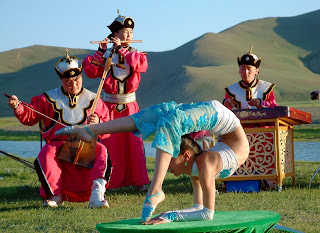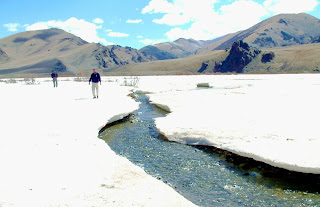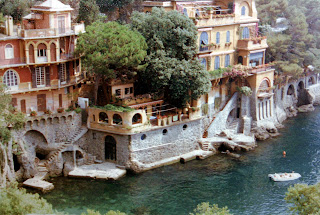The problem with son-in-laws
In the African bush many normal tasks can take on new dimensions. Sometimes, quite innocuous events can even become life-threatening. Take meeting my mother-in-law. In the raw African night, it was a close encounter with the jaws of death.
It all started when a letter arrived from England. I was doing some research in a large game reserve and living in a caravan with my British wife, who was a few months pregnant. It had been a while since she’d seen her mother, who was proposing to come stay with us.
The fact that we were living in a small caravan and that I hadn’t yet met my mother-in-law added a certain element of, well, perhaps excitement was the wrong word. It certainly created a logistical problem. A plan had to be hatched in the weeks before The Arrival. Accommodation for my mother-in-law was found in the rest camp, not too far from where we were camped. A few days before The Arrival, I was confident we’d anticipated most, if not all, of the hiccups that could occur.
A gradual introduction to the bush, perhaps a short drive, followed by a barbeque under the stars and pleasant natter was an important part of my plan. Then I’d take it from there. When the small plane arrived at the dusty landing strip in the late afternoon, I was ready. Importantly, the beers were as cold as I could get them without a fridge. I thought they’d be ideal for someone who came from the land of lukewarm ale.
All went very well at first. We chatted about the flight and first impressions of the wild bush. It was a warm evening and we were surrounded by the strident calls of cicadas and the other sounds of the late afternoon bush. My mother-in-law didn’t seem too bad. I was warming to the occasion and suggested a drive to look for animals.
Now I should mention that my wife’s mother was somewhat older than your average mother-in-law. Suffice to say that getting her into the Land Rover required a small stool and a hefty shove from the rear. This slight hitch over with, we set off. Soon the brooding twilight enveloped us. As the sun set, we saw all the wonders that abound wild Africa: the velvet bush, owls, impalas, kudus, giraffes, baboons, tranquil hippos and, of course, elephants. I revelled in Katie’s excitement as she saw these new sights all around.
I tried to start the engine. Silence. Absolute silence. No click, nothing. “Let’s just watch a bit longer,” I said, hoping that my new "friend" had not noticed the little mechanical mishap. Illogical though the idea of waiting may be, it did give me some time to think about what to do next.
Picture, if you will, a Land Rover with a brand-new British mother-in-law as accustomed to the ways of Africa as one could get after less than a day in the continent. A Land Rover with no means of starting, parked off the main road in the pitch dark. A biologist with limited mechanical knowledge all surrounded by a large pride of lions.
Opening the bonnet to have a look inside was obviously not an option. I was going to have to spend the night on the front seat of a Land Rover with this stranger, this mother-in-law person. The emergency tin of baked beans under the seat was little consolation. There was no Moon. I could hear the lions, stretching into a more comfortable position, easing stiff limbs. Flexing sharp claws. I could sense them, hungry, ready to jump at me and my inheritance. I wanted my mother-in-law to be somewhere else. I related all I knew about lions, pretending that we were there because we wanted to be there. Seemingly hours passed. My knowledge was exhausted. She knew something was wrong. We were very late.
Incredibly, just as I was about to tell her that we would have to spend the night here, a vehicle came along the road. As I slouched lower in the seat and wished our vehicle would vanish, the mother-in-law opened the window furthest from the lions and shouted at the top of her voice, “HELP!” The thought of sharing the front seat of the Land Rover was probably too much for her.
The driver of the approaching car stopped. I explained what had happened and asked him to pull his vehicle next to mine, open the door and let us get in. He was, understandably, reluctant. I had to spend a fair amount of time cajoling him into doing this. Eventually, I stooped very low and appealed to his ingrained sense of male chauvinism and his great sense of hospitality. I explained that there was an overseas visitor, a maiden in distress, who needed his help as I was totally incompetent with mechanical things. I laid it on very thick. He eventually drew his vehicle up next to ours and nervously opened the passenger door, never once taking his eyes off the lions, highlighted in the headlights of his vehicle.
Recall, if you will, that I did not have a young maiden in the vehicle with me. In fact, she’d required help getting into the Land Rover in the first place. I was a trifle concerned that getting her across the seat of one vehicle, down and across about three metres of open space, in front of what were undoubtedly ravenous lions, then up and into another vehicle, may pose more than a little problem. I needn’t have worried.
She’d carefully sussed the situation and decided that her new son-in-law needed a severe talking to and that she would have to survive the next 30 seconds if she was to give me this. And survive she did, with aplomb. A quick slide, a jump, one step across three metres, and a perfect leap into the Land Cruiser alongside, was all it took.
On the return trip I was more nervous than a stranded driver among a pride of hungry lions. My mother-in-law had survived what I’m sure she believed was an attempt by me to bump her off – as far from the New Scotland Yard as possible – so that I could claim her millions. Her methods of revenge are another story, but this was one tale she dined out on many times.
Back at camp, I survived an attack from my very worried wife. My mother-in-law eschewed the luke-warm beers I'd carefully looked after and rather shared much of the tax-free scotch with my wife as the story was retold. I busied myself with the barbeque and then survived a second attack from two very angry women. I don’t remember if the barbeque was a success I was too busy trying to figure out how to get my Land Rover back.























































